Features
Charles III’s visit to Australia
Published
12 months agoon
Charles III’s visit to Australia reminds me of the return of Hong Kong to China 27 years ago, when Charles, as Crown Prince, handed Hong Kong back to the Chinese leaders on behalf of the Queen, opening a new page in Hong Kong’s history.
I believe that Charles’s visit to Australia will probably be his last as King, given his age, his health and the demand of the Australian community to become a republic. Last week, I was invited by the Prime Minister’s Office to Canberra on Monday to attend a reception in the Parliament Hall to welcome King Charles, and to see for myself how Australia has welcomed him. The protest ‘performance’ by Aboriginal Senator Lidia Thorpe at the end of the welcome ceremony was right in front of my eyes, and it got me thinking.
Charles’s love affair with Australia, 17 visits in total
Charles III became King of Australia last year, immediately following his accession to the British throne, and it is a misnomer for many Hong Kong newspapers to describe the visit of the King of England to Australia as a visit in his capacity as monarch of a foreign country. Charles arrived in Sydney on Friday evening, rested for a day and then visited the North Sydney Anglican Church for a service on Sunday, and then visited the NSW Parliament in the afternoon, where he presented an hourglass timer to celebrate the 200th anniversary of the founding of the NSW Parliament. The Commonwealth Universities Association (CUA) also announced that Charles had made a personal donation to establish a scholarship to help smaller developing countries face urgent economic, social and environmental challenges.
On Monday Charles attended the Canberra Parliamentary Welcome Reception and a number of charity events. In the afternoon Charles met with two climate scientists and Queen Camilla visited charities. On Tuesday, they met with Australian of the Year 2024 and fellow cancer specialists Professor Georgina Long and Professor Richard Scolyer to discuss cancer research. Later they met with Aboriginal leaders and attended an Australian barbecue. On Wednesday Charles III travelled to Samoa to open the Federal Heads of State Conference. It was not easy for King Charles, who began cancer treatment in February, to stop for nine days to visit Australia. Polls conducted in Australia during the period showed half of Australians were satisfied with the King’s visit, ahead of Prime Minister Albanese and Opposition Leader David Dutton.
This is the second visit by a sitting head of state to Australia since Queen Elizabeth’s visit in 2011. Charles first visited Australia when he was 19 years old and spent six months as a Year 9 student boarding at Geelong Grammar School’s Timbertop campus. This was his 17th visit to Australia (one more than Queen Elizabeth) and his first as King. In 1983 he visited Australia with the then Princess Diana and the newborn Prince William, with Princess Diana adding to Charles’ popularity.
Will he give up the headship soon?
In a sign of the importance Charles III attaches to his relationship with Australia, he took a break from his cancer treatment to visit Australia for five days before travelling to Samoa to preside over the Federal Heads of State Conference. He was met at the airport on Friday evening by Governor Sam Mostyn, Prime Minister Albanese and NSW Premier Chris Minn, but all the Premiers declined to attend the State Welcome Reception on Monday, citing official commitments. I had thought that Australia might be speeding up its transformation into a republic as more immigrants from different countries become Australians, and that Charles’ trip would become a “farewell to Australia” tour. However, the polls conducted during this period show that most Australians do not want to change the status quo, so if Charles’ health improves, perhaps he will have a chance to visit Australia in the future.
Charles has always reiterated that he has no objection to Australia becoming a republic, and that he would be happy to fulfil the wishes of the Australian people. However, some of the organisations pushing for Australia to become a republic have argued that Australia is not really a ‘land without people’ and that it would be disrespectful to the Aboriginal people to have an Englishman as head of state through an election. However, it seems that there is no consensus in the community on whether an Aboriginal leader should be allowed to take up the role of the head of state, and it may not be accepted by the current multi-ethnic society. 1999 Australia held a referendum, only 45% of Australians would support a republican system, and the situation is still similar to that time in the opinion polls released on Tuesday. So it seems unlikely that the monarchy will be abolished any time soon.
The Monarch Who Won the Hearts and Minds of the People
After the British landed in Australia in 1788, the colonies were formed into state governments under the British Empire, with a democratic system of government whereby the King of England became the head of state, and between 1890 and 1900, the Australian states voted in a referendum to form the Commonwealth of Australia, with today’s constitution, no longer colonies but self-governing by the people of those states. It was the choice of the people of each state to become a Commonwealth, and on 1 January 1901 the Commonwealth of Australia was formally established when the King of England, who was also the King of Australia, was voted into office by the British Parliament. For the Australians, it was not the British who conquered this part of Australia by military force and forced the Australians to accept the King of England as their head of state, but the colonisers fought for independence as a self-governing country, but after independence, Australia still maintained its ties with Britain and appointed the King of England as the King of Australia.
Queen Elizabeth was the first sitting monarch to visit Australia in 1954. After the Second World War, Britain pursued a policy of de-colonisation, with British Malaya and Singapore in the vicinity of Australia becoming independent states. Queen Elizabeth visited 57 Australian cities and towns during her 58-day tour. The trip involved 31 flights of over 16,000 kilometres by plane, and many trips by train, car and ship. It is estimated that 75% of the 9 million Australians who met the Queen in person at the time, made the Queen’s visit the only major event of its kind in Australia at that time. The visit made the Queen the Queen of Australians, and it is fair to say that the Queen gave the majority of Australians who had settled in the Commonwealth far from Britain an identity that connected them to British history and tradition. From that time until today, Australians have believed that they were not separate from the Asian nations from which they were so different, living in isolation in the Pacific in a Western society.
Charles’s visit to Australia today is not the same as it was in Elizabeth’s time. But the latest opinion polls show that Australians are not keen to speed up the establishment of a republic, indicating that although Australians have been in closer contact with Asian countries, it is clear that Australia is still reluctant to give up its historical ties with Britain. the establishment of AUKUS, which has become the centre of gravity of Australia’s foreign affairs and defence in recent years, shows that the Australian society is not willing to become a completely independent country from Britain in the near future. In all likelihood, Australia would like to strengthen its co-operative relationship with more ex-British countries. If this were to happen, there would be a market for the King of England to be the King of Australia, at least for a certain period of time.
A Different Concept of Monarch from the Chinese Empire
Due to historical factors, most European heads of state were not direct rulers of the country, but rather symbols of the country. This is a completely different concept from that of the emperors who have always governed China, and it is believed to have started in Britain.
More than 800 years ago, the King of England signed the Magna Carta, handing over the power of governing the country to the aristocracy, and eventually developed the present democratic system. It can be said that the power of the king has long since passed away, and the monarch is no longer, and does not need to be directly responsible for the policies of the country. However, the emperors of the Chinese Empire (i.e. China in history) have always had the supreme power to govern the country. When an emperor failed to govern and the country was in turmoil, there was often a coup d’état or a popular revolt, leading to a change of dynasty and the Chinese would support the new emperor. It can be said that such a system, which advocated the supremacy of power, made the rulers unwilling and unable to give up the power they possessed. Whenever the Chinese nation was invaded by foreigners, the majority of the Chinese people would accept the new emperor’s rule, but in the end, the ruling system composed of scholars assimilated the foreign monarchs and nations. For example, the Manchurian dynasty was still ruled by the Han Chinese ruling class, and the Manchurians were eventually Sinicised to the extent that not many of them know much about Manchu culture today. Another example is that the Mongols refused to be Sinicised, and as a result, when their control over the society was weakened, they were driven back to the north by the Han Chinese, and their life has never been un-Sinicised.
From these different views on kingship, we can understand the situation of Charles III today. Though the kingship is inherited from history, the actual governing power is in the hands of the people, so the kings do not have absolute power and interests. Today, the British Royal Family is an alternative group of people in Britain who can contribute to the improvement of the country’s inequalities, or give hope to the neglected people, and thus provide strength to the stability of the society. Most of the activities of the British royal family are ceremonial and charitable, and the royal family has accumulated a great deal of wealth over the course of its history. Whether or not they continue to be members of the Royal Family is not an important issue for them. Moreover, while royalty is often the centre of public attention, there are some members of the royal family who are unwilling to take on such a role. Prince Harry, for example, who had no right of succession, gave up his position and became an independent celebrity, enjoying his leisure time.
Charles III knows what he’s doing
For me, still in Hong Kong, a visit from the British Royal Family means holidays, celebrations and good news. When the Queen comes to Hong Kong, she’s bound to be on holiday, and part-time workers are always hoping that the Queen Mother (Hong Kong people’s nickname for Queen Elizabeth) will come to Hong Kong more often. The royal family’s visits to Hong Kong are often to preside over the launching of large-scale construction or projects, and are a sign of Hong Kong’s prosperity, stability and development. Charles visited Hong Kong five times in his capacity as Crown Prince. Initially, it was thought that the Queen was too old for the Crown Prince to take over the throne, but the Queen’s longevity made Hong Kong people realise that he would not have the opportunity to preside over the handover as King in 1997.
But Charles did manage to get the British out of Hong Kong in style. Charles III left Hong Kong’s Queen’s Pier (which no longer exists today) on the HMS Britannia with the British flag lowered, signalling that the British had come and gone by ship. I believe that most people in Hong Kong at that time, as well as the rest of the world, were amazed that the British had turned this barren harbour into the richest metropolis in the world. Looking at the prosperity of Hong Kong, the quality of life of the people of Hong Kong at that time, who would say that the colonial government was a tyranny that exploited the people?
Charles summed it up as the contribution of the British in Hong Kong, and today, 27 years later, many Hong Kong people around the world would agree and still miss it. Charles’s ‘farewell to Australia’ is a low-key visit to a country where many have rejected him as king, despite the difficulties of fighting cancer, and where he insists on his duty as ‘King of Australia’ (many Hong Kong media have misrepresented his visit to Australia as the ‘King of England’). Charles III’s early public statement that he would let the Australian people decide whether to become a republic or not shows that Charles III realised that the era of the king as the head of state was over. By making the change known to the Australians, the hardliners, who had been in favour of retaining the royal system, had no reason to hold out any longer. But the Australians were in no hurry to change, and Charles did not have to accelerate the pace. Australia’s transformation into a republic has become a consensus that the Australian community needs to seek on its own, and this attitude shows Charles’s ability to know what to do and what to do not, as well as his political wisdom.
A Nation Grows
The attitude of the Australians towards the royal family also shows that a country has to grow. In the beginning, Australia was just a new continent discovered by the British, similar to the Americas. These two lands were too far away from Britain and not on the Asian trade routes to be of much trade value to the British Empire. India, Hong Kong, Singapore and some parts of Africa were different, they played the role of entrepot and supply port in the East-West trade, and as these places were already governed by established sovereign governments, the British had to become sovereigns through war as conquerors. However, the British did not colonise these colonies in large numbers. While the administration of these colonies brought benefits to Britain in terms of global trade and the plundering of the resources of these lands, at the same time, the administration of these colonies also brought great problems and costs to the British Empire. After the First World War, Britain’s power declined so rapidly that after the Second World War, Britain adopted a policy of decolonisation, allowing these colonies to become independent. To this day, many of these countries still maintain a good co-operative relationship with Britain and are part of the Commonwealth.
The situation in America and Australia was different. The opening up of America was driven by religious idealists who were dissatisfied with the British social system and soon formed self-governments in opposition to Britain. As a result, the United States of America was founded on the other side of the Atlantic Ocean with western democratic institutions but without the historical baggage of Britain, and with a strong belief in individual freedom, human rights and the rule of law, and has become the most powerful country in the world in the last few decades. Australia, on the other hand, because of its more remote location, only had settlers from the lower social classes and gold miners who pursued a free life, and up to 70 or 80 years ago, it was still a small country with a population that supplied Britain with wool, beef and dairy products for trade. Nevertheless, the lives of these oppressed people, who sought freedom and equality, were greatly improved by the richness of the land. The colonists quickly established self-government, honoured British traditions, and because the neighbouring countries were all undemocratic in Asia, Australian society was keen to maintain its close relationship with Britain until the Second World War, and naturally, the British king became the king of Australia.
Queen Elizabeth’s charisma, coupled with the White Australia policy that prevailed in Australian society for more than 50 years, has kept Australians from changing the present system of having the King of England as the head of state. However, over the past 30 years, Australia has absorbed a large number of immigrants from all over the world, and this generation of Australians is now a global citizenry with a global outlook, but still retains the old values of freedom, equality and tolerance of different perspectives. Australians are able to build co-operative relationships with different countries and ethnic groups around the world, and because of this, Australian society is capable of making institutional changes.
It can also be said that Australia has grown to become a democratic, free and lawful nation in the Asia-Pacific region, one that demands mutual respect and tolerance, and that resists the threat of force and oppression. In the face of the reorganisation of the world order, Australia will play an important role in the region, and perhaps it is a good symbol for a change in the system of national leadership.
Who will be the head of state?
If Australia ever becomes a republic, how will she elect her head of state? Australia’s most powerful Governor-General has always been an elected head of government, nominated by the Prime Minister and appointed by the King of Australia. Most of them are respected members of the community, come from a wide range of backgrounds, and are seen as representatives of fairness and justice. Most of these nominees are knowledgeable people, but if we recognise that Australia did not start out as an uninhabited land, but was inhabited by Aboriginal people for more than 60,000 years, does it mean that the Australian community should consider an Aboriginal leader to be the head of state?
No Aboriginal person has ever been appointed as the Governor-General of Australia. Douglas Nicholls was appointed Governor-General of South Australia in 1976, the first Aboriginal person to hold such a position. Mr Le Van Hieu, an immigrant from Vietnam, also served as Governor-General, but they were appointed by the King and had no real power.
But if the head of Australia is elected by the people on a one-man-one-vote basis, how much power should he have? Is it possible to elect an Aboriginal head of state? Or should the Aborigines be the head of state of Australia? It seems to be very difficult for the Australian community to reach a consensus on these issues.
As I attended Charles III’s welcome reception in Parliament on Monday, I observed a number of things of interest.
You’re not my king, you’ve committed genocide
Before the King got off the bus and arrived at Parliament House, there was an Aboriginal welcome, a sign of respect for Aboriginal people, and a parade of Australian soldiers. I saw Charles III stop to talk to the soldiers, some of whom were obviously not white. On entering the parliamentary chamber, the sign language interpreter, sitting on the far left hand side of the room, conveyed a very clear message. I don’t think many people in the room would have needed a sign language interpreter, but rather a way to express to the Deaf people of the country that they too are part of this country and can be seen on the TV news. Before the start, Auntie Violet Sheridan gave the Aboriginal welcome to the King, and then the Prime Minister’s speech, which showed that the Australian government recognises that this land belongs to the Aboriginal people.
The Prime Minister’s and King’s speeches also mentioned how Queen Elizabeth won the hearts of all Australians on her first visit to Australia as King. The Prime Minister also praised King Charles for his many visits and interest in Australia’s development and charitable work during his years as Crown Prince. Prime Minister Albanese recognised the positive role Charles has played in Australia’s development and growth to date. Charles spoke about his first time living in Australia and how the Aboriginal culture has had a huge impact on his life over the past 58 years. He also expressed his concern about the recent fires and natural disasters that have occurred in Australia in recent years, and was pleased that Australia has grown to become such an influential country in the world.
It could have been a perfect farewell visit. The guests did not come as kings to a land of exiled convicts, the hosts did not bow and scrape as vassals, and we all parted in a courteous manner, with the Prime Minister saying that Australia would continue to play an active and important role in future federal meetings of states. It could be said that this visit was the perfect prelude to Australia’s entry into a republic. However, immediately after the speeches, Aboriginal Senator Lidia Thorpe rushed forward and shouted, ‘You are an exterminator’ and ‘You are not my king’. Her action absolutely disrupted the harmony of the whole welcoming ceremony, and all the participants shook their heads and sighed. Bringing politics into the ceremony was not recognised and supported by the participants and Australians. Lidia was later criticised by many Aboriginal leaders for insulting the king she claimed to be loyal to, losing her integrity and bringing shame to the Aboriginal people.
Aboriginal people are being ignored?
Are Lidia’s demands reasonable? Firstly, Lidia wants to get back the bones of the Aborigines. Many Aboriginal skeletons were brought to Britain during the colonial era, and some museums have returned them to Aboriginal communities in the past.Lidia’s request is reasonable, but should it have been made at the King’s welcoming party, or is there a better way?
Secondly, Lidia says the King is responsible for the genocide of the Aborigines, which is a difficult question to answer. When the British first landed in Australia, not many people would have thought that the Aborigines were living in a highly civilised society at that time. Since the Australian continent had been isolated from the world for tens of thousands of years, when the known civilised society developed into the Industrial Revolution, the British encountered the Aborigines and regarded them as undeveloped and did not regard the land as inhabited. However, inhabited land can also become colonies of other countries through wars. It is not uncommon for the original inhabitants to die in large numbers after the invasion of a new nation.
In fact, under such circumstances, the British did not carry out genocide against the indigenous people to a large extent. This was not because the British were not aggressive, it was believed that it was only because of the vastness of Australia and the distance between Australia and Britain that the British did not colonise on a large scale. After the conflict between the British colonisation and the Aborigines, the Aborigines settled in the more remote inland of Australia. It was not until the discovery of gold mines in Australia in the 60s and 70s that more Britons emigrated to Australia, and Lidia’s assertion that Charles or the King of England carried out genocide in Australia is clearly not true.
The British colonial government set up loyalist governments in each state, recognising the King as the head of state was their choice, and there is no law in each state that says that Aborigines must be citizens of each state. However, there were Aboriginal Protection Officers in each state to protect the rights of the Aborigines in case of conflicts between the Aborigines and the citizens of the state, so that the Aborigines could be treated fairly in the society. You can say that the colonialists stole the land by claiming that it had no owner, but this is the view of the post-World War II world on respecting national sovereignty. During the colonial era, when it was a common belief in the world that military might was the key to determining who belonged to a territory, it was considered progressive for the colonisers to ignore the rights of the aborigines instead of exterminating them.
Perhaps the officials who dealt with the Aborigines at that time did not know how to do the job well, but at least the Australian society did not completely ignore the Aborigines.Lidia can say that the British colonialists initially ignored the cultural heritage of the Aborigines, or they did not respect the rights of the Aborigines, but it is far-fetched to think that they had occupied the Aborigines’ land. At that time, the Aborigines did not have a life style of settling on a piece of land for a long period of time. It can also be said that they were not a people who settled in a fixed place, but a people who travelled around a certain place for a long period of time. The Aboriginal people also did not have any concept of property rights (settlement) or who owns a certain piece of land, and naturally, there was no such thing as encroachment.
A Free, Democratic and Rule of Law Australia
When the state and federal governments of Australia were formed, Aborigines were not initially included in national statistics. The intention was that Aborigines would be denied the responsibility of state protection, and that they would not be taxed or provided with welfare benefits by the state and federal governments, not that the state or federal governments would not recognise their existence and right to exist. The fact that Aboriginal people could only live on land that no one else owned or used was not a big problem, as there was plenty of land in Australia in the first place. The Aborigines had the right to deny that they were nationals of either the British Empire or the Commonwealth of Australia, but in doing so, they also denied the responsibility of Australia as a nation to protect them. Senator Lidia Thorpe’s behaviour is therefore clearly contradictory.
As Aborigines, Lidia has the right to deny the existence of the Commonwealth of Australia because the Aborigines did not become Australian citizens in 1900 when they voted in a referendum to accept the Commonwealth’s constitution. They became part of the Commonwealth of Australia in a referendum in the 67th century, when the original colonisers and their descendants were accepted into the Commonwealth of Australia. Since then they have enjoyed the privileges, benefits and Aboriginal land rights of living in Australia, and Lidia was born after the constitutional changes that made all Aboriginal people Australians, and naturally, a subject of Charles III of Australia. Since her birth, she has enjoyed the welfare and education provided by the Australian government, and has become part of the Australian government by running for election, being elected, and swearing allegiance to the Australian government. However, Australians enjoy freedom of speech, and simply stating publicly that you are not a subject of Charles III is not treason or sedition, nor is it a criminal offence, as long as you do not take any specific action. She is a democratically elected member of Parliament, and the Parliament does not have the power to remove her from office.
Lidia’s behaviour demonstrates that Australians today enjoy a great deal of freedom, and that they use this freedom ‘unreasonably’ to promote their own political ideas without fear of being suppressed by the government. This is all because Australian society practises democracy and the rule of law, and allows its citizens to enjoy freedom. Whether they are descendants of the original British colonisation, Aboriginal people, or people who have immigrated from outside the UK and settled in this country, they all enjoy these rights, and this is the most valuable change that some of us, the first generation of immigrants to settle in this country, have experienced.
King Charles has gone, but his visit to Australia has made Australians think again about who they are and how Australia should go forward. How should Australia go forward? I’m sure it will be discussed amongst Australians for some time to come.
You may like
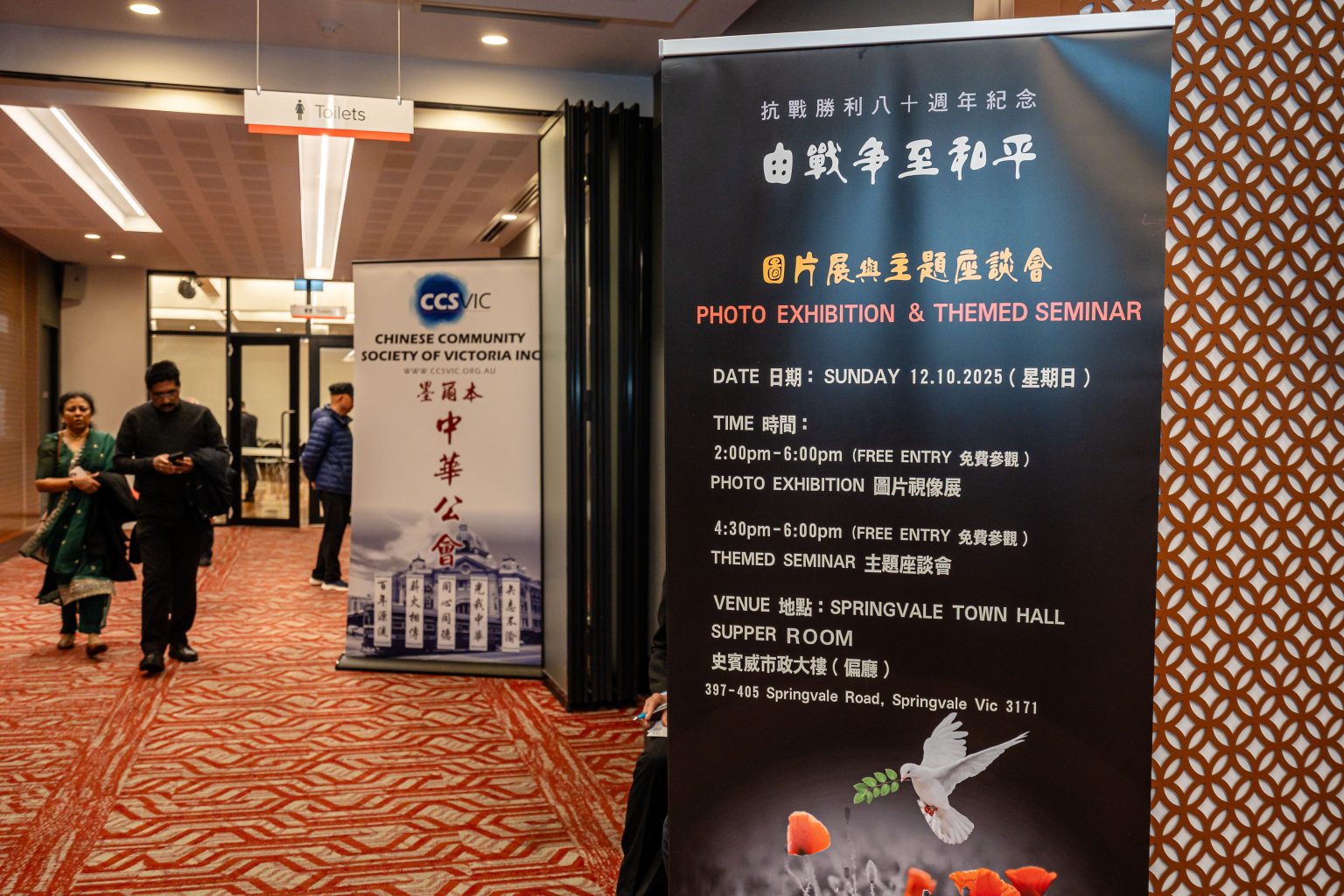
In each issue of Sameway Magazine in June, I usually write reflections on the June Fourth Massacre. The incidents that unfolded in China on that day in 1989 altered the life paths of my generation and myself. Additionally, every October, I reflect on China’s experiences over the past century. In 2011, encouraged by Taiwanese historian Dr. Gary Lin Song-huan, Sameway published a special commemorative edition every two months leading up to the centenary features publication of Republic of China. That October, we released the Centennial Special Edition exploring a century of modern Chinese history. This year marks the 80th anniversary of the victory over Japanese invasion of China. Not only did China hold a military parade on September 3rd, but Melbourne’s overseas Chinese community also seized this opportunity to organize various commemorative events.
While China’s victory in the War against Japan invasion is undoubtedly a cause for celebration among global Chinese communities, earlier this year, Mr. Bill Lau of the Chinese Youth Society of Melbourne CYSM discussed with me: What connection can today’s generation, raised in Melbourne, possibly have with the War? What should this generation commemorate? How could the Nanking Massacre, the Siege of Shanghai, and the major battles be connected to their generation? At the time, I suggested that the Sino-Japanese War could be traced from the September 18 Incident of 1931, through the Xi’an Incident of 1936 and the Marco Polo Bridge Incident of 1937 that ignited full-scale war, ending in 1945. Doesn’t this resemble Russia’s invasion of Crimea in 2013, and the ongoing Russia-Ukraine conflict that has now stretched beyond the past three years?
Though Japan’s invasion of China unfolded on Chinese soil while the European war had yet to begin, it was entangled in the complex web of alliances and rivalries among nations worldwide. The European war erupted two years later, while the Pacific War saw U.S. entry after the 1941 Pearl Harbor attack. This demonstrates how the Sino-Japanese War continuously constrained the progress of the German-Japanese alliance. Reflecting on this historical period, I believe it offers profound insights into the unfolding global landscape today.
In China, everything operates under state control. The national history taught to students is entirely written by the Communist Party, and the resistance against Japan has historically received scant mention. Yet in recent years, China has vigorously promoted the narrative that the Communist Party led the anti-Japanese struggle. By stoking anti-Japanese sentiment, it has ignited Chinese nationalism, turning condemnation of Japanese militarism into official policy. On the 70th and 80th anniversaries of the War of Resistance, China held grand military parades to showcase its growing national strength. Consequently, the facts surrounding the War have garnered attention within Chinese communities worldwide.
The question of who led the resistance against Japan is actually quite straightforward to discern. When Japan began its aggression against China, the Chinese Communist Party had only recently been established and had not yet assumed governance over China. Its military strength was nowhere near what it is today. To describe the Communist Party as the main force in the resistance at that time, or as leading China’s fight against Japan, defies basic common sense. It is evident that over the past two decades, the renewed emphasis on the hatred of Japan’s invasion of China and its current threats to China is nothing more than political propaganda, not worthy of serious debate. Yet, under prolonged political indoctrination, it is indeed concerning to consider how well the younger generation of Chinese, raised in today’s China, truly grasp the facts of the Sino Japannese War.
In the commemorative events organized by various Melbourne groups this year, Mr. Bill Lau particularly emphasized that the cultural variety show should center on presenting history, allowing performers and audiences alike to revisit authentic historical events. Additionally, community education was conducted through bilingual historical photo exhibitions and the publication of a special publication. I believe this is a very sound approach. However, at one symposium I attended, certain community leaders focused solely on condemning the Communist Party for seizing mainland power through the war effort. They clearly exploited the commemoration as a platform for political posturing, which was deeply disappointing.
Undoubtedly, the eight-year War of Resistance exhausted the Nationalist forces while the Communists conducted propaganda and education campaigns, winning popular support. Furthermore, the Nationalist government’s corrupt and incompetent rule led to a deteriorating post-war economy, ultimately resulting in the transfer of rule in China and shaping today’s political landscape. It can be said that Japan’s invasion profoundly influenced contemporary Chinese politics. However, portraying this war solely as a calamity brought about by the Communist Party does not tell the whole story.
For those of us who grew up and were educated in Hong Kong or overseas Chinese communities with open access to information, commemorating the resistance against Japan should deepen our understanding of today’s global landscape. As for the next generation or younger cohorts, I firmly believe we bear the responsibility to preserve contemporary historical events through media. We must enable them, through education, to develop critical thinking skills and uncover the truth of history.
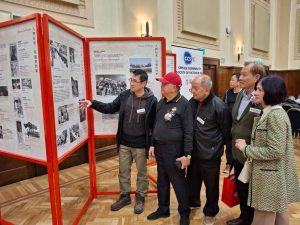
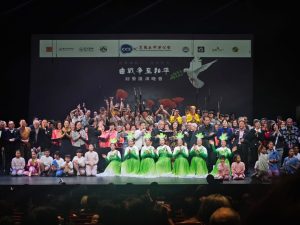
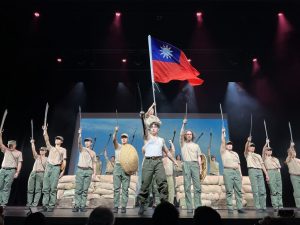
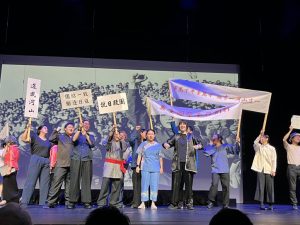
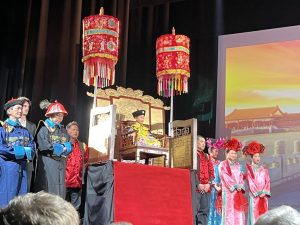
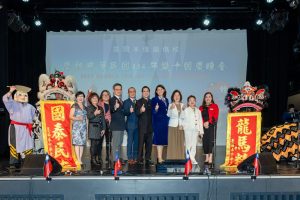
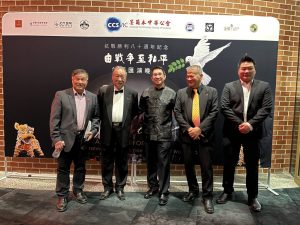
Mr. Raymond Chow
Published in Sameway Magazine on 24 October 2025
Features
History Written Under Control: Comparing East and West, and Resisting Twisted Narratives
Published
6 days agoon
October 23, 2025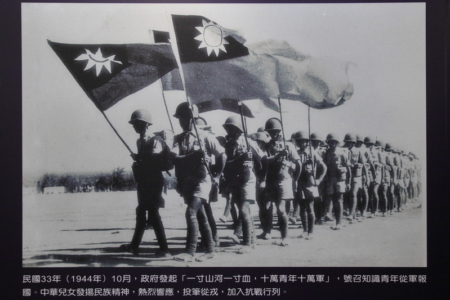
East And West’s Different Historical Views
History helps us understand and learn from the past. Most people agree that it is important, but the way Eastern and Western countries record history can be very different. These differences can cause confusion, disagreements, or even disputes over what really happened.
With the rise of digital media, how countries tell the story of WWII can be very different. China’s role in the war is described in various ways, showing how the media can sometimes twist history with propaganda or misinformation. We hope to cite examples of how the role of China in WWII has been documented differently, in order to detail the importance of the media’s role in twisting historical events through propaganda and disinformation.
First, China and Western countries record history differently. In the West, historical documents are stored in archives, and writers can usually record events freely. In contrast, historical China relied on a chain of official historians who copied records left earlier dynasties to write about the past dynasty. These recording historians couldn’t openly record events that will criticize the then emperors (such as iron fist rulership), as doing so could put them and their families in danger or even get exterminated.
Of course, Western history isn’t perfect either. From an outsider’s point of view, people often see the same events differently, even on how a country is invaded. For example, any elderly Chinese might strongly defend China’s actions in the Sino-Japanese wars, while western scholars may consider many factors like land disputes, political conflicts, and ideology when explaining about the war.
Western countries often value knowledge and individual thinking for everyone. China, on the other hand, has a long history of centralized control over information. Even before printing technology was established, China had a unified written language and centralized monitored historians, to allow government control on how history was recorded. Japan had a central government too, but regional differences in culture and record-keeping still existed. Smaller countries like Laos relied more on local communities and oral traditions to preserve historical records. These examples show that whether a society values individualism or collectivism can greatly affect how history is written and remembered.
Because of this difference, history can easily be twisted when personal or political interests are involved. Today, traditional historians are fading into the sunset, slowly being replaced by 24/7 news media. If countries continuously presenting biased or incomplete versions of events, the public’s understanding becomes confused and biased. Governments or storytellers may ignore events that don’t fit their desired narrative, leaving important truths hidden.
China’s current education on the Sino-Japanese Wars
For example, Chinese textbooks often present the CCP as the main force leading the fighting against the Japanese, but that’s not entirely accurate. The Nationalist leader Chiang Kai-shek actually led the early efforts, reluctantly joining forces with the CCP after the Xi’an Coup. In fact, Japan’s invasion of China began earlier than the 1937 Lugou Bridge / Marco Polo Bridge Incident.
The CCP often blames Manchukuo for allowing the Japanese army in invading Manchuria, but this reflects only part of the truth. While the Manchurians had some influence over that area, Manchuria was controlled by warlords, not the central Chinese government, that was Republic of China at that time. Puyi, the puppet leader, was influenced by advisors to took money from Japan and became a puppet. Looking at events from different perspectives shows how interpretations can be distorted. For example, one could ask: what if Chiang Kai-shek delayed action to avoid alerting the enemy? Even small changes like this can shape how we view the invasion’s seriousness.
The CCP also emphasizes that Chinese soldiers fought bravely while Western countries refused to help. Their narrative suggests that foreigners only cared about land and resources of China, but that’s only partly true. Britain did pressure the Qing dynasty to give up Hong Kong, but European countries and the USA avoided sending troops mainly for diplomatic reasons. Before Japan attacked Pearl Harbor, sending forces to China could have risked a more extensive war with Japan. Instead, the West provided weapons and supplies to the Nationalist government at that time. In hindsight, this situation is somewhat similar to the recent, three year-long Russian-Ukraine war.
The Tale of Australian William Donald
CCP influence has affected global perceptions, leading some Western countries to avoid independent research. Many Australians, for example, are unaware that some of their citizens had played key roles in the War in China with Japan. One notable figure is the Australian journalist William Henry Donald, who was deeply involved.
Donald started as a journalist and foreign correspondent before becoming an advisor of the Nationalist government in China. During the 1911 Revolution, he helped Dr Sun Yat-sen’s short-lived government negotiate with foreign powers, moving beyond reporting to active mediation. Initially, Donald admired Japan and even received a Japanese honour for his coverage of the Russo-Japanese War (1904–05). By 1915, however, he criticized Japanese imperialism and warned the West about its expansionist actions.
Donald played a crucial role during the Xi’an Coup, mediating between major Chinese leaders. His efforts helped secure Chiang Kai-shek’s release and the formation of a reluctant alliance with the CCP. Later, he disagreed with Chiang in 1940 over policy toward Germany. During the Pacific War, Donald was captured in Manila in 1942 but was freed in 1945. Afterward, his influence gradually declined.
Despite his decades-long involvement, historians have largely overlooked Donald’s contributions, whether advising Chiang, mediating coups, or supporting Dr Sun Yat-sen. His role is complex and less dramatic than headlines like “Chiang vs. Mao” or “Japan Invades”, so it is often ignored. In Australia, documentation about him is limited, with primary sources stored in China or specialized archives. Because Australian history education focuses more on colonial and ANZAC history, Donald’s contributions have faded from public awareness.
Chinese authorities rarely highlight Donald either. He was not a combat hero, and his advisory role could be politically inconvenient. The CCP tends to downplay internal compromises or foreign contributions, focusing instead on its own post-war achievements. Even in normal broadcasting, the media celebrating China’s journey post-war isn’t too different.
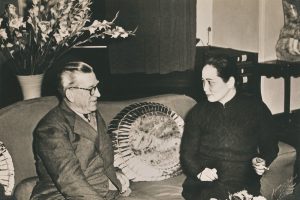
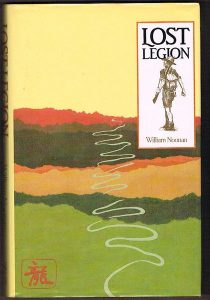
How CCP Centralization Affects Historical Documentation
Unlike many Western countries, which value history for education and heritage, China often emphasizes national pride over strict accuracy. This approach leaves younger generations unaware or unwilling to question historical events. The CCP has used systematic omission and withdrawal of all related records— sometimes called ‘amnesia therapy’ (失憶治療法) by scholars — to hide uncomfortable truths, like the Tiananmen Square Massacre. By controlling school curricula, the party successfully shapes collective memory, erasing or reframing events to suit its narrative.
In contrast, Western countries often debate controversial history publicly, offering multiple perspectives for critical analysis. The CCP also shapes views of other nations, like Japan, portraying it as a continued threat even though imperialism has ended. These examples show that history is rarely objective; it can be twisted to serve political goals. Recognizing these distortions is vital for developing critical thinking in future generations.
The CCP’s indoctrination is well-known but not unique in Asia. Postwar Japan focused on pacifism and democracy in textbooks, downplaying imperial aggression. South Korea and Taiwan have alternated between nationalist and democratic interpretations. Smaller countries like Vietnam, Laos, and Cambodia relied on oral histories and local records, allowing communities to shape memory. These examples show that centralized versus decentralized record-keeping strongly affects how generations perceive the past, emphasizing that control over history shapes national identity.
Australia’s Involvement in the Second Sino-Japanese War
The CCP’s influence on history goes beyond China. Cultural programs like Confucius Institutes promote party-aligned narratives internationally, shaping textbooks, museum exhibits, and media coverage abroad. Ignoring other perspectives, like those from Australia or Japan, can create a skewed understanding of WWII. This shows that controlling historical narratives isn’t just domestic indoctrination; it’s also a form of soft power.
Australia has made its own mistakes in recording history. While it doesn’t claim any credit as the CCP, it has largely hidden its involvement in China through the little-known Mission 204. In 1942, around 250 Commonwealth troops, including 48 Australians from the 8th Division, were sent to aid Chiang Kai-shek. Despite logistical difficulties and tense relations with Chinese commanders, these troops carried out successful operations, including ambushes and a notable raid on Japanese barges near Poyang Lake.
Mission 204, however, was withdrawn in November 1942 due to internal politics and health issues in the unit. Later, the Chinese Nationalist Party was forced to retreat to Taiwan by the CCP. For decades, Australia largely ignored or hid this history, only resurfacing clues in 2023. While avoiding CCP politics is understandable, it’s unfair to deny the public knowledge of Australia’s wartime actions, which effectively allows the CCP to dominate the narrative.
These examples show that celebrations of China surviving the Sino-Japanese War and WWII are often shaped by political agendas and media control. This leaves the public with incomplete, biased, or deliberately obscured views. Without critical analysis or access to multiple sources, key figures, like William Henry Donald, and events can be forgotten or misrepresented.
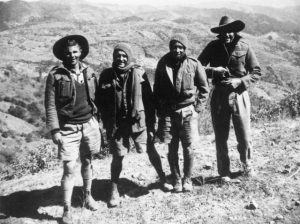
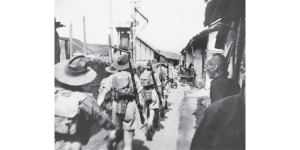

Viewing History Through A Critical Lens
Furthermore, whether in textbooks or news reports, the same historical events can be portrayed very differently depending on who tells the story. Motivations such as national pride, political advantage, or control over public narrative all highlight the need for careful comparative study. Governments exploit each new, impressionable generation by spreading half-truths or even outright lies under the guise of patriotism and unity. When in reality, it’s about framing themselves as ‘heroes’. The longer this continues, the fewer people will question the fabricated histories imposed by those in power.
When reading history, we shouldn’t take it at face value. What gets celebrated is rarely the full story, as many crucial voices stay buried under mainstream narratives. To avoid being misled by half-truths or polished myths, readers must take proactive steps to seek balance and truth.
For example, readers can compare news sources from different cultural backgrounds. Take the case of war survival anniversaries: a Chinese state outlet might glorify its own soldiers, while a Western outlet could focus on diplomatic strategy, such as why Western powers, despite ties with the invaded nation, chose not to intervene militarily. These contrasts reveal how bias shapes every narrative.
Another approach is to encourage counterfactual thinking, which is by exploring ‘what if’ scenarios to engage with history critically. Asking questions like “What if Chiang Kai-shek had acted sooner?” or”How might events differ if textbooks included multiple perspectives?” pushes readers to think beyond surface facts. By presenting alternative viewpoints side by side, educators and media can remind younger generations that history is layered, contested, and never entirely fixed.
News Media’s Historical Responsibilities
Additionally, should news outlets depend less on governmental sources, in order to report historical events to newer generations? For instance, the CCP often promotes itself as the sole hero in the Sino-Japanese war, overlooking many other factors that contributed to Japan’s defeat. To provide a fuller picture, journalists should consult academic historians from diverse backgrounds and archives. If local reporters are unable to do so, international media should avoid over-reliance on Chinese outlets, helping to diversify perspectives. Even when governments provide data, reporters must cross-check multiple sources: comparing war casualty numbers, dates, and accounts from different national archives.
To combat biased or incomplete narratives, media organizations must embrace investigative journalism. Rather than relying solely on press releases or government celebrations, journalists should explore archives, personal accounts, and lesser-known sources. This approach can uncover overlooked contributors, hidden controversies, or forgotten stories, such as the decades-long influence of William Henry Donald in China. Without such diligence, these stories risk being lost to history.
Other than Official Historical Narratives
Historical events are rarely one-dimensional. To ensure accuracy, news outlets should present both domestic and foreign perspectives. For instance, reporting on the Sino-Japanese War should not rely solely on CCP or Chinese Nationalist sources; Japanese accounts, Western observers, and even oral histories from survivors’ descendants can provide valuable insight. By comparing these perspectives, readers gain a deeper understanding of the complexity of events and can see where bias, pride, or self-interest has shaped narratives.
History is often told through the lens of nations, prominent leaders, or major battles, leaving countless contributors invisible. Unsung figures – nurses on the frontlines, translators bridging cultural and linguistic gaps, local militias defending communities, and ordinary civilians navigating war — have all shaped outcomes without formal recognition. Grassroots organizers and community leaders often mitigated famine, displacement, or political oppression, yet their stories rarely appear in mainstream textbooks. Highlighting these individuals challenges simplified nationalist accounts and invites readers to critically examine history from multiple angles. By including personal stories, letters, diaries, and oral histories, historians and educators can provide a richer, more nuanced understanding, showing that history is not only the story of leaders but also of ordinary people whose everyday decisions ripple across generations.

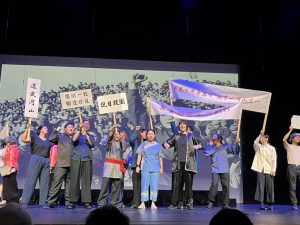
Importance of Multifaceted Historical Narrations
Historical narratives are not confined to academic debate; they actively shape contemporary geopolitics and international relations. The CCP’s control over historical interpretation has profoundly affected public perception of Taiwan, the South China Sea, Hong Kong, and Japan, often framing policies as defensive or restorative to fit a particular national narrative. Textbooks emphasizing the ‘century of humiliation’ or heroic struggles against foreign powers can reinforce domestic support for assertive policies abroad.
Understanding these manipulations shows how governments leverage history to justify policy, cultivate national sentiment, and shape international perception. Media, educational programs, and cultural diplomacy can extend this influence globally, subtly guiding how other countries interpret events involving China. Recognizing these dynamics is crucial for analysts, educators, and citizens, highlighting that history is not merely a record of the past but also a tool actively deployed to influence present-day politics and international relationships.
Digital Era’s Challenges Towards History
The landscape of historical narrative has further shifted in the digital age. Social media platforms are not just spaces for connection but arenas for ideological competition. TikTok, WeChat, YouTube, and Twitter/X have become battlegrounds for competing interpretations of history. Viral clips, memes, and algorithmically promoted content often shape perceptions more strongly than formal education. Algorithms tend to favor content that evokes strong emotions – national pride, outrage, or sensationalism – reinforcing particular viewpoints while suppressing others. Unlike these fast-moving but potentially biased feeds, traditional textbooks, though limited in perspective, are curated and vetted to ensure factual consistency.
For younger generations growing up online, cultivating media literacy, critical thinking, and the ability to cross-reference multiple sources is essential. This is not only to resist propaganda but also to engage with history in its full complexity. Encouraging discussions about the origins and credibility of online content empowers students to recognize how narrative manipulation occurs in real time. It prepares them to approach information critically throughout their daily lives.
Finally, historical reporting should be more understandable to younger generations. The media can leverage multimedia tools – short videos, infographics, timelines, and interactive articles – to break down complex events. Clear, engaging formats, using layman language and visuals, can prevent oversimplification and reduce the risk that a single, potentially biased narrative dominates public understanding.
In an age of propaganda, selective memory, and curated narratives, readers must approach history critically. By seeking multiple sources, questioning official accounts, and embracing diverse perspectives, we can resist half-truths and uncover the full story. History is not just a record of the past; it is a tool for understanding the present and shaping a more informed future. If media, educators, and citizens take these steps seriously, hidden figures like William Henry Donald and many others who shaped history behind the scenes can finally receive the recognition they deserve.
Editorial : Raymond Chow, Jenny Lun
Photo: Internet
Published in Sameway Magazine on 24 October, 2025
Features
Cohealth Service Cutoff — Victorian Government Cannot Ignore
Published
6 days agoon
October 23, 2025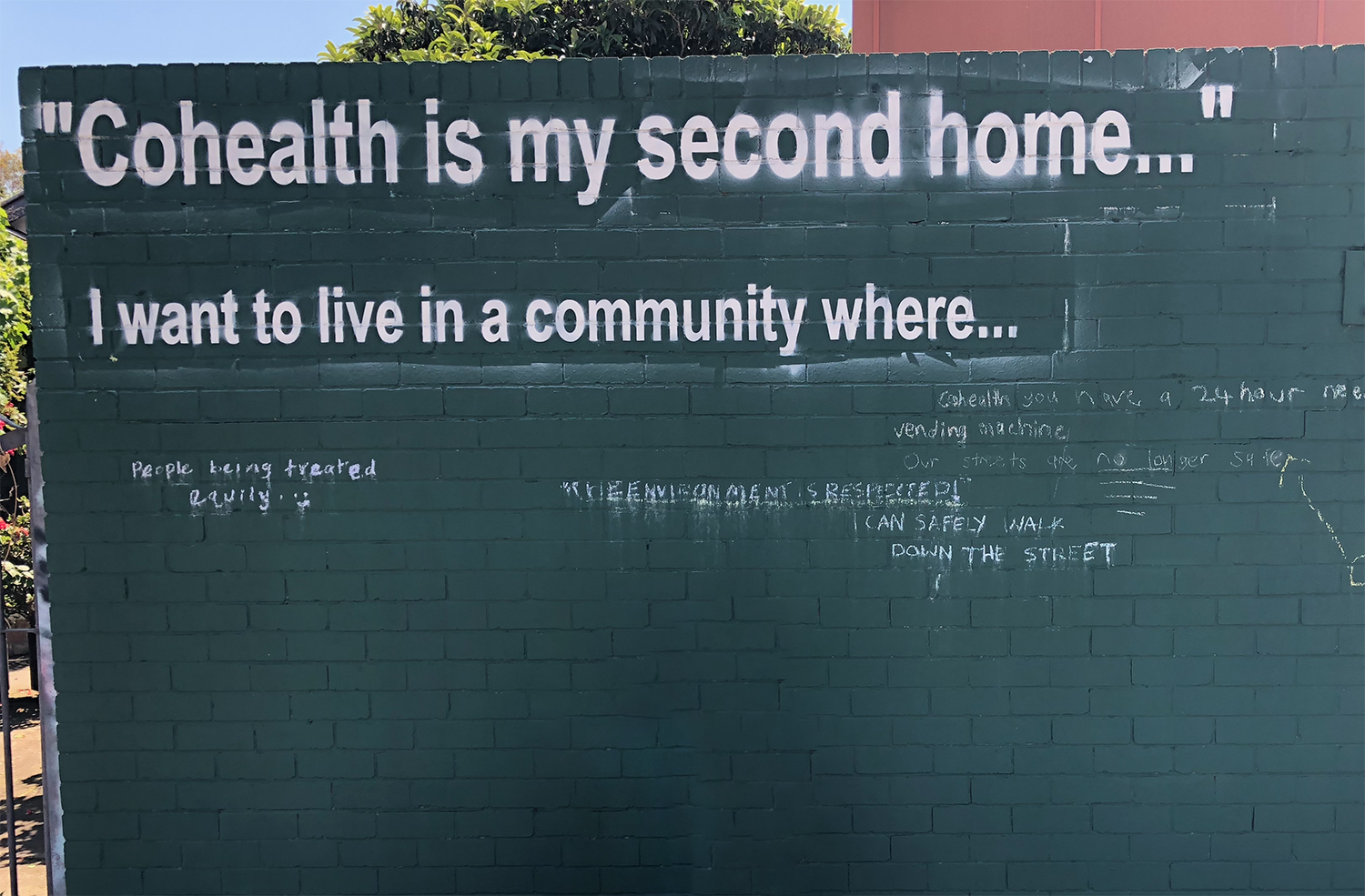
On October 16, Cohealth—one of Australia’s largest community health organizations and a non-profit medical institution—announced it would close three of its clinics. The news immediately sparked widespread public debate and criticism. The affected clinics are located in Collingwood, Fitzroy, and Kensington. The Fitzroy and Kensington clinics will cease general practitioner (GP) and consultation services this December, though they will continue providing specialized support for alcohol, drug, and domestic violence issues. The Collingwood centre is scheduled for full closure next June.
The closures will directly impact approximately 12,500 patients, resulting in 20 doctors losing their jobs and 44 nurses facing reassignment or redundancy. These clinics have long provided vital primary healthcare services to low-income individuals, the homeless, refugees, domestic violence survivors, and those with chronic illnesses, serving as an indispensable health support network within the community. However, due to insufficient funding, rising costs, and operational pressures, these services are now being forced to cease.
Nicole Bartholomeusz, CEO of Cohealth, stated that the cessation of services reflects “multiple and complex pressures, including decades of underinvestment, aging infrastructure, and funding models that don’t match actual needs or the type of care required.” She noted: “The funding we receive is only sufficient to provide standard care, but we actually serve high-need patients who often require extended appointments and comprehensive case management tailored to each individual.”
Cohealth’s current Medicare subsidy only covers physician salaries, failing to account for nurses, receptionists, and other operational costs. As wages and supply costs rise, the annual gap between clinic operating expenses and Medicare funding continues to widen.
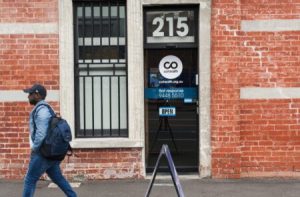
Reforms Too Late, Support Too Little
In truth, Cohealth’s predicament did not emerge suddenly but resulted from years of accumulated challenges. Although the federal Labor government has pushed Medicare reforms in recent years to enhance the sustainability of the universal healthcare system—such as the upcoming Bulk Billing Practice Incentive Program (BBPIP) launching November 1st, which will expand Medicare coverage, encourage clinics to maintain bulk billing, and provide additional funding for facility upgrades and team expansion— This initiative aims to improve access and affordability of healthcare services, with approximately 4,800 clinics expected to benefit.
However, for Cohealth, this reform appears to have come too late. The root problem lies not solely at the federal level, but in the Victorian government’s long-standing neglect of the actual health needs within grassroots communities. The poverty, homelessness, addiction, and trauma issues plaguing local communities have long exceeded the capacity of standard clinics. Yet the Victorian government has failed to provide additional support or establish stable funding mechanisms to sustain non-for-profit healthcare providers.
Cohealth identifies two primary causes for the current crisis: First, insufficient Medicare funding from the federal government for managing complex patients; Second, the Victorian government has failed to fund upgrades for the aging facilities at the Collingwood clinic.
Cohealth has repeatedly called for government support over the years. As early as 2022, Cohealth issued a statement noting that while they supported the government’s health-focused budget, the community health model—which played a critical role during the pandemic—was once again being overlooked. At that time, Cohealth emphasized the need for comprehensive investment across the entire healthcare sector to strengthen the health system as a whole.
The clinic’s facilities have long been outdated, with roof leaks forcing appointment cancellations. Despite multiple funding applications to authorities over the years, no substantive response has been received. Infrastructure Victoria’s report highlights that government funding for community services is fragmented and inadequate. The federal government has yet to establish dedicated funding for community health infrastructure. Even though the Australian government allocated $117 billion to health and medical services for 2024-25, community health organizations received only 0.3% of Victoria’s annual health infrastructure expenditure of approximately $2 billion.
Amid chronic funding shortages and sluggish government reforms, the state government’s disregard for community needs and inaction ultimately sealed the fate of these clinics. This underscores the state government’s core responsibility in ensuring the continuity of primary healthcare services.
Who is accountable for healthcare quality and service delivery?
In fact, community healthcare systems did not originate from government initiatives but from charitable and faith-based traditions. Early hospitals were often founded by churches or charitable organizations with a simple mission: to provide basic care to the poor and vulnerable through empathy and compassion. Healthcare then embodied social conscience rather than being a product of policy or systems.
As society modernized and public health concepts emerged, governments gradually assumed responsibility, incorporating health into the realm of “public duty.” The original intent behind this shift was noble—to ensure equal access to healthcare for all. Yet the process of institutionalization and bureaucratization introduced new challenges: the original “people-centred” care became diluted by layers of administrative procedures and economic logic. Healthcare services increasingly emphasized efficiency and output, gradually losing its human warmth.
Non-profit medical institutions like Cohealth represent a continuation of this historical trajectory. They uphold the founding spirit of charitable healthcare—serving vulnerable communities while upholding the belief that everyone deserves the right to health and equal access to medical care. Yet in reality, these organizations rely on government subsidies and unstable funding sources to sustain their operations.
The contradiction lies in the fact that as societies grow wealthier, public healthcare systems should be better equipped to protect the vulnerable. Yet the opposite occurs: medical costs rise relentlessly, resource distribution grows increasingly unequal, and healthcare services become ever more commoditized. In this environment, doctors are forced to complete consultations within “six-minute appointments,” nurses and receptionists operate at breaking point, and patients slip through the cracks of the system, overlooked.
Yet when reflecting on responsibility, the question may extend beyond “Who is to blame?” to “Where should healthcare be headed?”
Should we pursue the endless quest to “cure every disease”? Or should we return to healthcare’s fundamental purpose—ensuring everyone accesses basic health protection?
When the wealthy pay more for faster, better care while the poor endure long queues, has the ideal of equality already been swallowed by market logic?
Take Hong Kong, for instance. As a low-tax society, its citizens enjoy public healthcare at minimal cost—subsidized for life simply by holding a Hong Kong ID card. However, with an aging population and healthcare staff shortages, the public system has been chronically overburdened, leading to months-long waits for emergency rooms and specialist appointments. Consequently, the affluent middle and upper classes turn to private clinics, trading money for efficiency. This creates a healthcare system that appears equitable on the surface but is fundamentally stratified: the government guarantees access to services but not equal speed or quality. In other words, everyone has the right to medical care, but whether you can get better quickly and where you receive treatment depends on how much money you have.
Canada’s public healthcare system, meanwhile, is more idealistic. All residents can access free public healthcare with a health card, free from concerns about high costs. However, long waiting times and uneven resource distribution transform “free” into another form of “cost.” When demand far exceeds supply, fairness and accessibility inevitably clash.
Moreover, should healthcare prioritize “universal access” or ‘quality’? Should governments provide “basic care” or “comprehensive coverage”?
Comparisons with China, Hong Kong, and Taiwan
From an international perspective, Australia’s public healthcare system (Medicare) differs significantly from those in mainland China and Taiwan, each with distinct advantages and disadvantages. Mainland China’s system, dominated by public hospitals, subsidizes basic care through social medical insurance (urban employee/resident insurance). However, due to its massive population and concentration of medical resources in major cities, primary community clinics often struggle to handle high-demand patients—particularly low-income groups and those with chronic conditions. This mirrors Cohealth’s current situation: “resource concentration leading to overflowing demand.”
Taiwan adopted a National Health Insurance (NHI) model emphasizing “one health insurance card, nationwide healthcare coverage,” ensuring basic medical services for all regardless of urban/rural location or income level. NHI strengthens primary care clinics through subsidies and incentives, stabilizing the family doctor system. Nevertheless, disparities in healthcare resource distribution between urban and rural areas persist, and wait times for specialist care can remain excessively long.
In contrast, Australia’s Medicare system pursues fairness and accessibility in theory. Yet in practice, non-profit primary care institutions face chronic funding shortages and aging facilities. While serving predominantly vulnerable populations, these clinics often shoulder service volumes exceeding subsidy coverage. This structural contradiction creates a significant gap between the system’s ideals and its actual service capacity, highlighting a common challenge faced by vulnerable groups under different systems: even with “systemic safeguards,” they may still be marginalized due to inadequate resource allocation.
Australia’s Core Healthcare Contradiction
Returning to Australia itself, the core issue of its healthcare system isn’t a lack of total funding, but rather structural contradictions arising from resource allocation, institutional design, and policy priorities. Medicare is primarily designed for “standard medical services” such as general consultations, basic tests, and medications. However, it does not provide corresponding subsidies for the time, labour costs, and interdisciplinary integrated care required for high-need or complex patients. This leaves vulnerable groups unable to access truly comprehensive healthcare under the existing system.
Non-profit community clinics like Cohealth exist precisely to fill this gap. They offer extended consultations, case management, mental health counselling, addiction and domestic violence support, and even multidisciplinary integrated programs—services standard GP clinics struggle to provide. However, these intensive services are not fully subsidized by Medicare. Combined with limited state investment in primary care infrastructure, clinics face chronic financial strain, ultimately forcing service reductions or partial closures.
Cohealth’s partial closures reflect a deep-seated contradiction within Australia’s healthcare system: equity and accessibility do not equate to substantive care guarantees for high-need populations. While everyone ostensibly has the right to medical care, those requiring prolonged attention and individualized management often survive only by navigating systemic gaps. The institutional design itself thus creates an “invisible inequity” for high-need patients.
Australia’s healthcare also grapples with the dilemma of balancing universal coverage and quality. On one hand, the system must ensure everyone receives at least basic treatment; on the other, complex patients require sufficient time, specialized support, and case management. In reality, however, insufficient government funding and a narrow subsidy structure make achieving both goals difficult. Doctors are forced to rush through consultations, nurses and receptionists operate at capacity, while vulnerable patients languish on waiting lists. Non-profit clinics like Cohealth strive to fill these gaps, but persistent financial pressures and policy constraints render “humanized healthcare” a luxury in practice.
In other words, the core issue with Australia’s public healthcare system isn’t merely about assigning responsibility, but whether the system can return to its founding principle: ensuring everyone accesses basic healthcare while providing high-need patients with adequate resources and compassionate support when required. Cohealth’s predicament serves as a stark warning: without structural adjustments to resource allocation by government and society, the ideal of fairness remains unattainable, and vulnerable groups will continue to be marginalized by the system.
The Victorian Government’s Indisputable Responsibility
While medical policy is set by the federal government, state governments bear responsibility for implementing it according to local realities. Cohealth’s inner-city service area has a population receiving government living subsidies that exceeds the Australian average by more than double, indicating many residents cannot afford private services. The Victorian Government’s refusal to provide financial support to institutions like Cohealth demonstrates a disregard for vulnerable communities.
A similar situation exists in elder care for multicultural communities. While federal funding supports aged care services, research indicates that non-English-speaking seniors benefit most from living in facilities that accommodate their cultural and linguistic backgrounds. Yet, emerging senior communities like the Chinese diaspora receive minimal Victorian government assistance to build suitable aged care facilities. Since 2014, Labor leader Andrews has repeatedly proposed policies to purchase four plots of land for the Chinese and Indian communities to build elderly care facilities. Yet to this day, the Victorian Department of Health continues to leave these sites vacant, failing to hand them over to community organizations to develop services. This demonstrates a dereliction of duty by government officials. This situation bears striking similarities to Cohealth Community Health Services ceasing operations today due to neglect. Should the Victorian Government conduct a thorough review of the Department of Health’s operations?
Editorial : Liz Li, Jenny Lun
Photo: Internet
Published in Sameway Magazine 24 October 2025
Listen Now

Australia Expands Pacific Taskforce Role to Strengthen Regional Security
UN Chief Warns Humanity Has Missed 1.5°C Climate Target
Australia’s Social Media Ban Might Isolate Teens With Disabilities
Israeli Families Await Release of Remaining Hostages
Trump Does Not Explicitly Rule Out a Third Presidential Term

Fraudulent ivermectin studies open up new battleground

Cantonese Mango Sago

FILIPINO: Kung nakakaranas ka ng mga sumusunod na sintomas, mangyaring subukan.

如果您出現以下症狀,請接受檢測。

保护您自己和家人 – 咳嗽和打喷嚏时请捂住

U.S. Investment Report Criticizes National Security Law, Hong Kong Government Responds Strongly

China Becomes Top Destination for Australian Tourists, But Chinese Visitor Return Slows

What Is the Significance of Victorian Premier Jacinta Allan’s First Visit to China?

Albanese Visit to UK Focuses on Domestic Reform, Not Republican Debate

Optus Faces Another “000” Outage, Singtel Bonus Sparks Controversy
Trending
-

 COVID-19 Around the World4 years ago
COVID-19 Around the World4 years agoFraudulent ivermectin studies open up new battleground
-

 Cuisine Explorer5 years ago
Cuisine Explorer5 years agoCantonese Mango Sago
-

 Tagalog5 years ago
Tagalog5 years agoFILIPINO: Kung nakakaranas ka ng mga sumusunod na sintomas, mangyaring subukan.
-

 Uncategorized5 years ago
Uncategorized5 years ago如果您出現以下症狀,請接受檢測。
-

 Cantonese - Traditional Chinese5 years ago
Cantonese - Traditional Chinese5 years ago保护您自己和家人 – 咳嗽和打喷嚏时请捂住
-

 Uncategorized5 years ago
Uncategorized5 years agoCOVID-19 檢驗快速 安全又簡單
-
Uncategorized5 years ago
在最近的 COVID-19 應對行動中, 維多利亞州並非孤單
-

 Uncategorized5 years ago
Uncategorized5 years agoHow to wear a face mask 怎麼戴口罩


